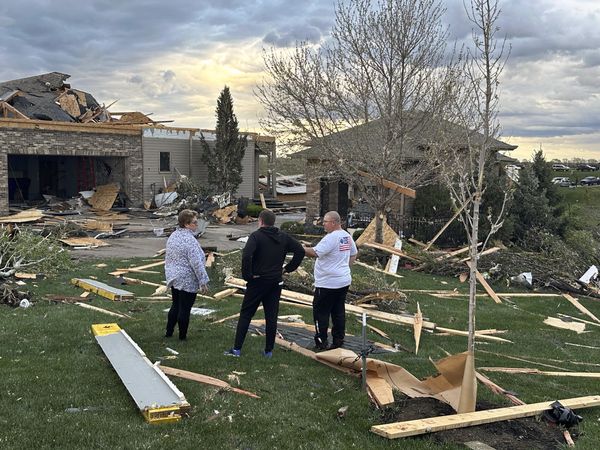It is one of the reasons that lead some people to give up air travel. For many people, it is one of the causes of their fear of flying. It often is the most tense moment of the flight.
Air turbulence.
It often causes travelers to panic. It can lead to anxiety, fear and sometimes injury. Severe turbulence can shake up even a seasoned traveler and make a few minutes feel like an eternity.
"Ladies and gentlemen, this is your captain. Please fasten your seat belts, we are going through a zone of turbulence." You have probably already heard this announcement on the plane, which often precedes a few jolts.
The sensation that follows is unpleasant for some travelers.
"While turbulence is normal and happens often, it can be dangerous," warns the Federal Aviation Administration (FAA). "Its bumpy ride can cause passengers who are not wearing their seat belts to be thrown from their seats without warning."
'Never Fear Turbulence'
The U.S. federal agency says turbulence is a leading cause of in-flight accidents for flight attendants and passengers in nonfatal accidents. From 1980 through 2008, U.S. air carriers had 234 turbulence accidents, resulting in 298 serious injuries and three fatalities.
"In recent years turbulence caused more than a third of air carrier accidents," said the U.S. National Transportation Safety Board (NTSB).
Elon Musk, the CEO of Tesla (TSLA) and the aerospace company SpaceX, however, believes that you should not be afraid of turbulence because the plane is not going to crash. He points out that the wings of an airplane can withstand extremely powerful forces.
It all started with a post from a Twitter user explaining that: "Airplane wings aren't some rigid chunks of metal: in fact, they probably have a bit more flex than you'd expect. This is the behavior of a Boeing 747's wing in a turbulence," the user posted on Oct. 14, with a video showing a wing of an airplane.
Musk seems to agree with what the user said.
"People should never fear turbulence," the world's richest man said. "Commercial airliner wings can handle insane amounts of bending."
The Wing Is Highly Flexible
The tech tycoon and SpaceX are building capsules and rockets to ferry astronauts to the International Space Station (ISS) and for space tourism. Musk also promised that humans will be able to live on Mars in the future.
Turbulence is air movement that normally cannot be seen, and often occurs unexpectedly, according to the FAA. It can be created by several conditions, including atmospheric pressure, jet streams, air around mountains, cold or warm weather fronts or thunderstorms.
This phenomenon is expected to increase with global warming. According to a study carried out by British researchers from the University of Reading in 2019, the number of mid-flight turbulence incidents will be much greater in 2050 than today and their intensity will be accentuated.
Whether light, moderate, or severe, turbulence is well known to pilots. They adapt their flight plans accordingly and are trained to maintain control of their aircraft in all circumstances, according to EpicFlightAcademy.
As for planes, any new aircraft must pass static tests to be considered airworthy. The purpose of these tests is to ensure the aircraft's structural integrity, well beyond the maximum stresses it could encounter in service. The planes are designed, tested and certified to withstand extreme turbulence that we would not normally experience in real life; there is therefore no risk.
In addition, the wing of the plane is highly flexible. This flexibility gives it its resistance. Like the reed, it bends but does not break. The aircraft is built to withstand disturbances in the forces it encounters. No amount of turbulence is strong enough to break the wings of an airplane, experts say. Airplane wings can be compared to the shock absorbers of a car. It is quite normal for them to bend in flight.
Industry sources also outline that the test pilots fly a plane to its technical stress limits, while the airline pilots always fly below the technical capabilities of the aircraft.
That's why they argue that air turbulence announcements are actually more for the comfort of passengers and to avoid accidents.
Mid-flight turbulence costs the global aviation sector up to $1 billion a year, according to the British researchers at the University of Reading.







